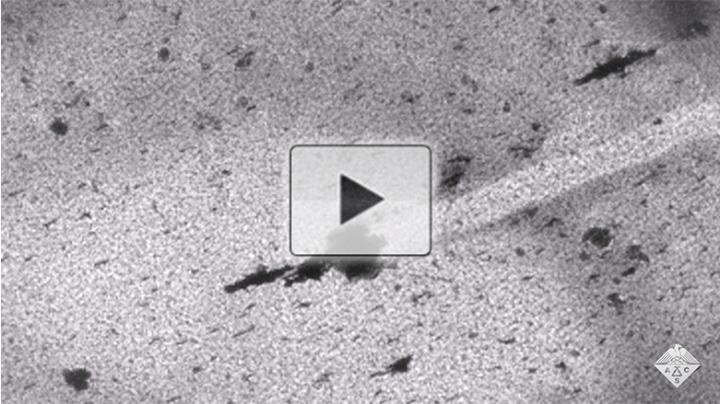
Credit: American Chemical Society
Biofilms — microbial communities that form slimy layers on surfaces — are difficult to treat and remove, often because the microbes release molecules that block the entry of antibiotics and other therapies. Now, researchers reporting in ACS Applied Materials & Interfaces have made magnetically propelled microbots derived from tea buds, which they call “T-Budbots,” that can dislodge biofilms, release an antibiotic to kill bacteria, and clean away the debris. Watch a video of the T-Budbots here.
Many hospital-acquired infections involve bacterial biofilms that form on catheters, joint prostheses, pacemakers and other implanted devices. These microbial communities, which are often resistant to antibiotics, can slow healing and cause serious medical complications. Current treatment includes repeated high doses of antibiotics, which can have side effects, or in some cases, surgical replacement of the infected device, which is painful and costly. Dipankar Bandyopadhyay and colleagues wanted to develop biocompatible microbots that could be controlled with magnets to destroy biofilms and then scrub away the mess. The team chose Camellia sinensis tea buds as the raw material for their microbots because the buds are porous, non-toxic, inexpensive and biodegradable. Tea buds also contain polyphenols, which have antimicrobial properties.
The researchers ground some tea buds and isolated porous microparticles. Then, they coated the microparticles’ surfaces with magnetite nanoparticles so that they could be controlled by a magnet. Finally, the antibiotic ciprofloxacin was embedded within the porous structures. The researchers showed that the T-Budbots released the antibiotic primarily under acidic conditions, which occur in bacterial infections. The team then added the T-Budbots to bacterial biofilms in dishes and magnetically steered them. The microbots penetrated the biofilm, killed the bacteria and cleaned the debris away, leaving a clear path in their wake. Degraded remnants of the biofilm adhered to the microbots’ surfaces. The researchers note that this was a proof-of-concept study, and further optimization is needed before the T-Budbots could be deployed to destroy biofilms in the human body.
###
The authors acknowledge funding from the Ministry of Electronics & Information Technology and the Department of Science & Technology of the Government of India.
The abstract that accompanies this paper can be viewed here.
The American Chemical Society (ACS) is a nonprofit organization chartered by the U.S. Congress. ACS’ mission is to advance the broader chemistry enterprise and its practitioners for the benefit of Earth and its people. The Society is a global leader in providing access to chemistry-related information and research through its multiple research solutions, peer-reviewed journals, scientific conferences, eBooks and weekly news periodical Chemical & Engineering News. ACS journals are among the most cited, most trusted and most read within the scientific literature; however, ACS itself does not conduct chemical research. As a specialist in scientific information solutions (including SciFinder® and STN®), its CAS division powers global research, discovery and innovation. ACS’ main offices are in Washington, D.C., and Columbus, Ohio.
To automatically receive news releases from the American Chemical Society, contact [email protected].
Follow us: Twitter | Facebook
Media Contact
Katie Cottingham
[email protected]




